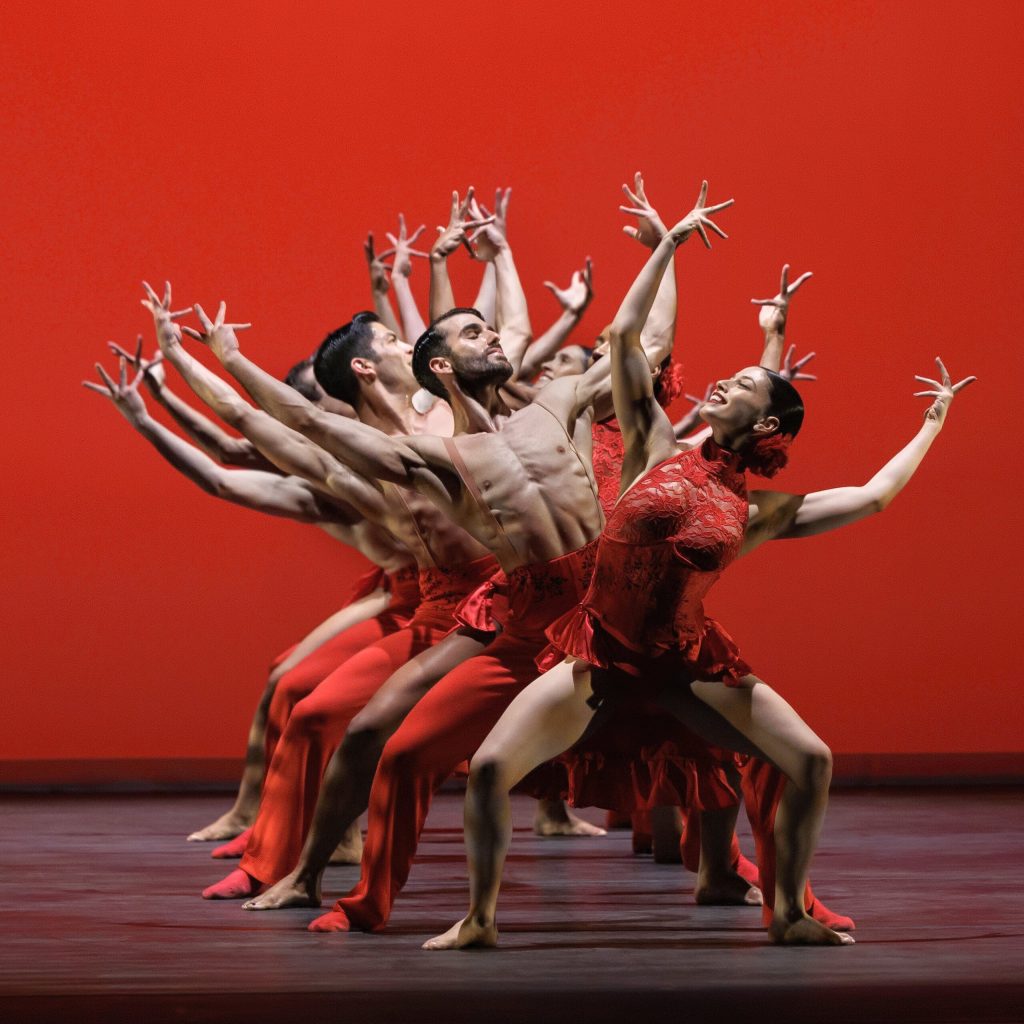In the vibrant heart of New York City, where cultures converge and creativity knows no bounds, there exists a transformative force that goes by the name Ballet Hispánico. With a history deeply rooted in Latine culture, this extraordinary organization not only embraces dance but also has made itself a powerful tool for change, education, and advocacy, addressing pressing social and political issues with every graceful movement.
For Eduardo Vilaro, the artistic director and CEO of Ballet Hispánico, and Michelle Manzanales, their visionary choreographer and director of the school of dance, their unwavering commitment to Ballet Hispánico’s mission is inserving BIPOC communities and providing a space for young children of color to experience dance in a way they didn’t know existed.
“[Dance is a] powerful language that allows participants to remove themselves from the day-to-day struggle of being understood, accepted, and seen,” Vilaro tells POPSUGAR.
Ballet Hispánico was founded in 1970 by Tina Ramirez, a pioneering woman who recognized the need to preserve and celebrate the richness of Latine culture through dance. Over the decades, this organization has evolved into a powerhouse that empowers Latine lives through a fusion of dance, education, and advocacy. The company weaves a cultural tapestry while promoting cultural awareness and for decades has actively remained engaged in advocacy work to address social and cultural issues, making Ballet Hispánico more than just a dance company.
“There will always be stereotypes and misconceptions,” Vilaro emphasizes. “The organization enables and empowers new narratives that express and articulate our unique journeys and diverse stories.”
The director shares that the late Ramirez once said, “When you change a student, you change a family, you change a community.”
“I took that sentiment a step further and added, ‘and then you change a nation,'” Vialro says. Manzanales is the choreographer whose work seamlessly blends tradition and innovation while shedding light on the experiences and challenges faced by Latine individuals.
“Dance as a medium provides a great opportunity to examine iconic Latine symbols and create conversations about them with our audience,” she explains. “Our goal is to break down stereotypes and preconceived notions about Latine culture. We do that through infusing the traditional and contemporary and by portraying our authentic selves.”
It is clear that Ballet Hispánico was not content with merely showcasing talent; they were determined to be a voice for change.
“We have been actively engaged in advocacy work to address the social and cultural issues since 1970,” Vilaro elaborated on their advocacy efforts, saying, “These continuing conversations reiterate the importance of a safe space for our shared communities to engage in dialogue and celebrate our diversity.”
One of the most powerful ways Ballet Hispánico addresses social and political issues is through their choreography. “My work as a choreographer is deeply personal and entrenched in my Mexican and American heritage,” Manzanales says. “I like to encourage my dancers to infuse their own perspectives and experiences into my work, whether that’s through improvisation or collaboration in the creative process.”
The “Sor Juana” piece choreographed by Manzanales is a striking example. Sor Juana was a 16th-century Hieronymite nun and poet who is remembered as the first published feminist (before it was even considered a term) of the New World.
“Her story is legendary, yet many people in the US are likely not aware of her,” Manzales says. “I also resonated with the issues she faced: censorship, repression, misogyny. The opportunity to choreograph for Ballet Hispánico arose, and what better platform than that for someone like Sor Juana?”
Ballet Hispánico’s work doesn’t stop on the stage. They not only engage with communities, and partner with advocacy organizations, but they also use their platform to amplify the voices of those who need to be heard. Their signature “Diálogos” conversation series explores the interconnections of the arts, social justice, and Latine cultures, and in 2020, Ballet Hispánico partnered with peer organizations such as Alvin Ailey, New York City Ballet and Dance Theater of Harlem to launch #NYCDANCEUNITES to encourage voter turnout in the dance community.
Vilaro knows the world is watching and dance is a medium to reach audiences that need representation as well as belonging.
“We are the mirror for our communities to understand the power they wield through their traditions and cultures,” Vilaro says. “We open a dialogue for the world to hear the importance of diversity and cultural sharing.”
Ballet Hispánico has always been able to use dance as a form of activism and remains a “conduit for change” to this day. The company is able to continue its important and life-changing work through what Vilaro calls “a huge network of love,” the families that support their young dancers as well as the generosity of donors.
“We have been able to cement our mission and legacy for years to come because of community,” Vilaro concludes.
From its humble beginnings as a cultural organization celebrating Latine heritage to its present-day role as a force for change, education, and advocacy, Ballet Hispánico’s incredible journey has touched countless lives through the universal language of dance. Ballet Hispánico is a testament to the power of art to inspire, educate, and effect positive change, one graceful step at a time.

